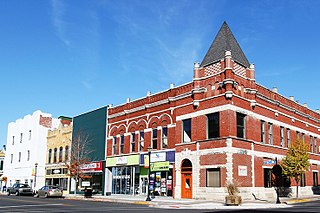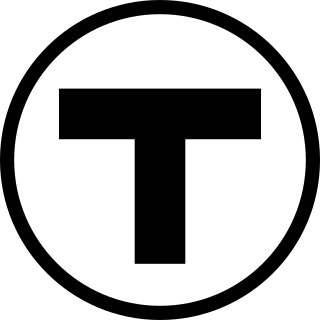
The Massachusetts Bay Transportation Authority is the public agency responsible for operating most public transportation services in Greater Boston, Massachusetts. Earlier modes of public transportation in Boston were independently owned and operated; many were first folded into a single agency with the formation of the Metropolitan Transit Authority (MTA) in 1947. The MTA was replaced in 1964 with the present-day MBTA, which was established as an individual department within the Commonwealth of Massachusetts before becoming a division of the Massachusetts Department of Transportation (MassDOT) in 2009.

The Southeastern Pennsylvania Transportation Authority (SEPTA) is a regional public transportation authority that operates bus, rapid transit, commuter rail, light rail, and electric trolleybus services for nearly 4 million people in five counties in and around Philadelphia, Pennsylvania. It also manages projects that maintain, replace and expand its infrastructure, facilities and vehicles.

The Los Angeles County Metropolitan Transportation Authority is an agency that operates public transportation in the Los Angeles metropolitan area. It was formed in 1993 out of a merger of the Southern California Rapid Transit District and the Los Angeles County Transportation Commission. It is chartered under state law as a regional transportation planning agency.

The Orange Line is one of the four subway lines of the Massachusetts Bay Transportation Authority. It extends from Forest Hills in Jamaica Plain, Boston in the south to Oak Grove in Malden in the north. It meets the Red Line at Downtown Crossing, the Blue Line at State, and the Green Line at Haymarket and North Station. It connects with Amtrak service at Back Bay and North Station, and with MBTA Commuter Rail service at Back Bay, North Station, Forest Hills, Ruggles station in Roxbury, and Malden Center in Malden. From 1901 to 1987, it provided the first elevated rapid transit in Boston; the last elevated section was torn down in 1987 when the southern portion of the line was moved to the Southwest Corridor.

The Silver Line is the bus rapid transit (BRT) system of the Massachusetts Bay Transportation Authority (MBTA). It currently operates five routes in two sections that were built in separate phases.
Metro Transit is the primary public transportation operator in the Minneapolis–Saint Paul area of the U.S. state of Minnesota and the largest operator in the state. The system is a division of the Metropolitan Council, the region's metropolitan planning organization (MPO), averaging 264,347 riders each weekday, carrying 90% to 95% of the transit riders in the region on a combined network of regular-route buses, light rail and commuter rail. The remainder of Twin Cities transit ridership is generally split among suburban “opt-out” carriers operating out of cities that have chosen not to participate in the Metro Transit network. The biggest opt-out providers are Minnesota Valley Transit Authority (MVTA), Maple Grove Transit and Southwest Transit. The University of Minnesota also operates a campus shuttle system that coordinates routes with Metro Transit services.

The San Diego Trolley is a light rail system operating in the metropolitan area of San Diego. It is known colloquially as "The Trolley". The Trolley's operator, San Diego Trolley, Inc. (SDTI), is a subsidiary of the San Diego Metropolitan Transit System (MTS). The Trolley began service on July 26, 1981, making it the oldest of the "second-generation" light rail systems in the United States. The entire Trolley network serves 53 stations, and comprises 53.5 miles (86.1 km) of route, and three primary lines named the Blue Line, the Orange Line, and the Green Line, as well as a supplementary heritage streetcar downtown circulator known as the Silver Line that operates on select weekdays, weekends and holidays. In Q4 2014, the Trolley was the 5th most-ridden light rail system in the United States, with an average of 119,800 riders per weekday.

Key bus routes of the Massachusetts Bay Transportation Authority (MBTA) system are 15 routes that have high ridership and higher frequency standards than other bus lines, according to the 2004 MBTA Service Policy. Together, they account for roughly 40% of the MBTA's total bus ridership. These key bus routes ensure basic geographic coverage with frequent service in the densest areas of Boston, and connect to other MBTA services to give access to other areas throughout the region.
The Urban Ring was a proposed project of the Massachusetts Bay Transportation Authority and the Massachusetts Department of Transportation, to develop new public transportation routes that would provide improved circumferential connections among many existing transit lines that project radially from downtown Boston. The Urban Ring Corridor is located roughly one to two miles from downtown Boston, passing through the Massachusetts cities of Boston, Chelsea, Everett, Medford, Somerville, Cambridge, and Brookline. The project was expected to convert 41,500 car trips to transit trips daily.

ABQ RIDE is the local transit agency serving Albuquerque, New Mexico. ABQ RIDE operates a variety of city bus routes including the Rapid Ride semi-BRT service. Serving 13 million passengers in 2012, it is the largest public transportation system in the state.
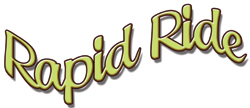
Rapid Ride is the name of an express bus service with some bus rapid transit features in Albuquerque, New Mexico. Inaugurated on December 21, 2004, Rapid Ride was intended to provide a faster and more efficient means of public transit in Albuquerque and to serve as a pilot project for a potential light rail line. It is operated by the local transit agency, ABQ RIDE.

The San Diego Metropolitan Transit System is the public transit service provider for Central, South, Northeast and Southeast San Diego County, in the United States. MTS operating subsidiaries include the San Diego Trolley, Incorporated (SDTI), and San Diego Transit Corporation (SDTC). Average daily ridership among all public transit services provided by MTS was 271,500 in the Fourth Quarter of 2017.
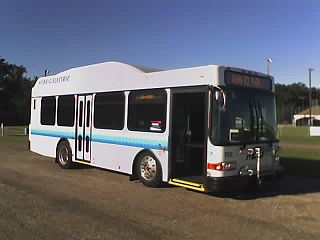
Metropolitan Evansville Transit System (METS) is a public transit system consisting primarily of bus service in the city of Evansville, Indiana.
The Indianapolis Public Transportation Corporation, branded as IndyGo, is a municipal corporation of the City of Indianapolis in the U.S. state of Indiana. IndyGo has managed and operated the city's public bus transit system since 1975.

The Massachusetts Bay Transportation Authority (MBTA) operates heavy rail, light rail, and bus transit services in the Boston metropolitan area collectively referred to as the rapid transit, subway, or T system.
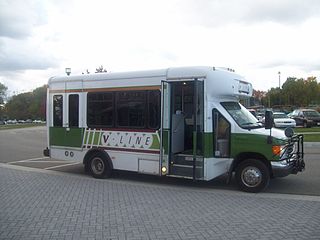
The V-Line is the local bus operation in Valparaiso, Indiana. Service began on October 1, 2007 making Valparaiso one of the smallest cities in the United States to have its own independent public transit system.
Go COMO, formerly Columbia Transit, is a city-owned public bus system that serves the city of Columbia, Missouri. The system operates Monday through Saturday, except on major holidays. Services include fixed-route services, on-call para-transit shuttles for the disabled, a system of commuter shuttles for students and employees of the University of Missouri, and hotel shuttles during MU football games. In fiscal year 2009, 2,007,263 rides were logged along the system's six fixed routes and University of Missouri Shuttle routes, while the latest available records show 27,000 rides logged aboard the para-transit service.
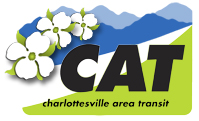
Charlottesville Area Transit is the provider of mass transportation in Charlottesville, Virginia. The organization was formed in 1975 when the city bought out Yellow Transit Company, which held a private monopoly on city busing. In 1999, the agency took a big leap in terms of providing better service and gaining more ridership, as it established a free shuttle route connected downtown with the University of Virginia. In 2007, the University Transit Service and Charlottesville Area Transit entered into an open ridership agreement that allows UVA students, faculty, and staff ride CAT for free by showing a valid UVA ID card. Eleven routes are offered Monday through Saturday from the early morning until the late evening. Sunday service is only available on the Free Trolley and Routes 2 and 12.
Green Mountain Community Network (GMCN) is a private, nonprofit organization, that owns and operates the public transit system by local bus in Bennington County in southwestern Vermont called the Green Mountain Express. Their bus service currently has 3 local "fixed deviated" weekday routes in Bennington: the Red, Blue and Brown routes, which can deviate up to 1/4 mile from their alignment upon request. They also have two local Saturday routes, and three commuter routes: the Orange Line, with weekday plus Saturday service to Manchester; the Purple Line, with weekday service to Williamstown, Massachusetts; and the Emerald line, with weekday service to Wilmington. The Emerald Line is a partnership between West Dover-based Southeast Vermont Transit's "the MOOver" and GMCN.
The Fairlawn Neighborhood in Kokomo, Indiana is an almost entirely residential neighborhood in the center of the city.
